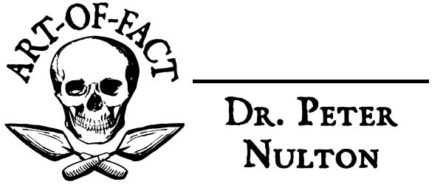Assignment D: Oral Report
Creating an oral report is in many way similar to writing a paper, but with a more performative aspect. Offered below is some of my general advice on creating and delivering oral presentations.
Oral presentation skills are important and useful in day-to-day life. If you can be comfortable communicating with groups of people of varying sizes, you may find that it has a positive affect on your relationships and social life, from one-on-one situations to being the “life of the party.” It doesn’t matter whether you want to be that or not, you’ll have a useful skill for any situation that arises.
There’s a popular saying, attributed to military lecturers: ‘First, you tell them what you’re going to tell them. Then, you tell them. Then, you tell them what you told them.” Now I’m going to tell you about planning a report, and then I’m going to tell you about delivering a report.
Unlike the reader of a paper, the audience in your oral report cannot go back and revisit points they have missed. This should have some ramifications for your planning of the report:
1) Some concepts and arguments which are effective in papers are too complex for the oral report format. You will want to create a simplified version of what you would write in a paper, without “dumbing it down” so much that you insult the audience. One way of managing this is by offering a number of tasty little morsels of information, paving the way to your thesis. Another is to reinforce your point by means of occasional repetition, although, when repeated too often, too similarly, or too close to the last time you said it, repetition can become annoying. Another is to reinforce your point by means of occasional repetition, although, when repeated too often, too similarly, or too close to the last time you said it, repetition can become annoying. See?
2) Visual aids of some sort can add a great deal to a presentation, and the format of slides or some method of changing visual aids works well with the dimension of time in a presentation format. If you plan to use a number of visual aids, experimenting with their order might help you to enhance the logical structure of your presentation, not unlike rearranging paragraphs in a paper.
Depending on the resources available, you may have access to a slide library or digital projection. Generally, I use PowerPoint. (If you will be using this format a great deal, I suggest you peruse Edward Tufte’s The Cognitive Style of PowerPoint, in order that you not misuse the power of PowerPoint for evil. (See http://www.wired.com/wired/archive/11.09/ppt2.html or http://www.edwardtufte.com/tufte/powerpoint ) There are other programs that can be used, but I may not have the necessary software. If you want to project your presentation from my computer, please send it via email at least one day in advance, I will download it, and it can prevent the delay caused by changing which computer is connected to the projector. If you wish to use slides, let me know in advance, and I can pull them for you or arrange for you to pull them on the day of the presentation, depending on the procedural rules. Another method, that has its limits if used alone, is to make photocopied handouts of the images for each person in the class. Lastly, a document projector may be available (mainly at Clark University); ask me some time in advance before assuming it is available, as it is often scheduled and is expensive, so the procedures regarding it are not simple and flexible. A document projector can project, as the name suggests, books, photographs, and other two dimensional objects onto the screen.
3. Don’t plan on saying much more than you can say in the time allotted (usually 15-20 minutes in my classes), nor much more than your audience can reasonably be expected to understand and remember. On the other hand, you don’t want to say two or three sentences, sit down, and stare awkwardly at the class or audience until they realize that that’s all you have to say, or until the 15-20 minutes run out. A good strategy if you are using index cards or printed lecture notes is to make the talk shorter than the full allotted time (presentations typically take longer than you might expect, when going at the proper pace, and you may not be able to say as much as you had hoped), but make sure that you know considerably more about the topic than you include in your notes. That way, if you realize you don’t have enough material, you can add remarks off the top of your head, which also serves to make the presentation less mechanical, and makes you look more prepared for questions from the class or audience. It helps if your presentation notes are simply ideas and phrases rather than full sentences, because an audience or a class can become bored very quickly by listening to a reading of an entire paper. In order to keep track of time without looking like you want to run away as fast as you can, it might help to take your watch off and put it on the desk, table, or podium in front of you, so you can look at it regularly without seeming like you’re trying to catch a train.
4. Treatment of the subject. What you should say about your topic or subject is dictated by a few things: your thesis, what information you were or were not able to find in your research, and what kind of class it is. In an Art History class, for example, some history is appropriate. If your whole presentation is on political, religious, military, or social history, however, and lacking reference to art or architecture, then there is an inappropriate amount of history. Try to engage with the subject instead of stopping at historical background. Look at the object(s) or buildings. What impression do you get about them? Look at it in terms of formal analysis (see assignment B for ideas). Historical background should be limited mainly to what is most specific and directly related to the topic. For example, in discussing the Palette of King Narmer, a brief discussion of state formation in Egypt may be an appropriate background; an overview of Egyptian art or Egyptian history is an inappropriate amount of background. Just like in a paper, too much background gives the impression that you haven’t done your research and are trying to fudge a report by telling what you know about something more general.
W hen delivering an oral report, there are also several points to consider. Most of these concerns and issues are interrelated. If you’re nervous, practice. It helps to practice with a friend if you can. Someone who also has a presentation to run by you is ideal; the vested interest on making sure that they get good advice will probably increase the quality of their advice to you. With a friend or by yourself, practice will help immeasurably.
1) Pace. Time yourself when you practice, and try to talk at a fairly slow pace. You’ll almost always find that you’re talking too fast for your audience. I am often guilty of this myself. When you practice, and during the talk, remember to slow down a bit. You might not get to say everything you wished you could, but you won’t lose your audience. Every once in a while take a look around. It’s unlikely that your presentation is going too slowly, but if it is, it will be obvious on the faces and in the snores of your fellow students. Don’t be upset if one person falls asleep…he/she was probably out late last night. But if two or three people seem like they’re drifting off, it may mean that you should pick up the pace a little bit, or talk with a somewhat more emphatic expression.
2) Relax. This isn’t the end of the world. If you are uncomfortable with speaking in public, know this—the only thing that makes it easier is doing it more often. Realize that you and your fellow students are all in the same boat. It is certain that others feel the same way as you about it, whatever that feeling may be. (Unless it’s a very small class; but then you’ll know if there were more students, they’d feel like you.) Be a polite audience for them, and, most likely, they’ll offer you the same courtesy. No one is out to judge you harshly. Do your research, be prepared, practice if you need to, and let the fact that you have prepared bring you confidence. If something small goes wrong, laugh it off and continue without letting it get to you. Short of a medical emergency, nothing is important enough to let it throw you. You won’t lose points for equipment malfunctions and other minor mishaps. These things happen; things will be fine.
3) Oral presentations have frightened students for years, but almost all of them lived through it. Many people get nervous, but you should know that there’s no great need to be. If you focus on your grade while you are constructing your presentation, it might help you make a better presentation. If you focus on it while you’re giving a presentation, it can only make you nervous. Once your preparation is done, and you’re on the performance phase, focus on the performance itself—it’s like being an actor/actress…here’s your spotlight. Just relax and relish it.
That’s about all I have to say about oral presentations right now. You might want to check out the websites listed below. If you read this and have any input or advice on questions I can answer or how to improve this document, let me know.
An excellent document, of similar purpose to this one, but focused on giving presentations in computer science, can be seen at: http://www.cs.wisc.edu/~markhill/conference-talk.html . The similarity of its structure to the structure of this document (I was surprised myself) demonstrates the authority of common-knowledge regarding public speaking.
Other useful websites:
http://www.canberra.edu.au/studyskills/learning/oralpres.html
http://capa.physics.sc.edu/~swhisnant/phys308/oral_presentation.html
Here is a good example of a grading rubric—a way of measuring how the presentation lives up to faculty expectations, and how it is grading:
http://projects.edtech.sandi.net/morse/oceanhealth/rubrics/oralpresentation.html
In time, I hope to include my own grading rubrics for papers and presentations on this site.

